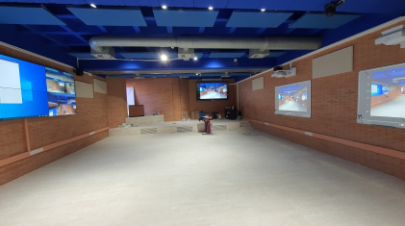The digital transformation of teaching goes through the transformation of teaching spaces. The Complutense University has been carrying out experiments in this area for years, with notable results such as the hyper-classroom of the Faculty of Education and its model of classrooms with mobile chairs, to name a well-known one. It has not been the only faculty to work on these ideas, however, most have opted to integrate untransformed technologies. Most classrooms have been modernized by installing motorized cameras, sometimes with motion tracking, and screens on mobile or fixed wall mounts.
How should a space be for teaching where the student is the center of the activity? How to use technology to achieve it? In response, we propose an alternative based on ideas such as those of the Faculty of Education and also on active learning experiences taught from the Vice President for Students. We call these the active learning rooms and they are the result of a year of work from the Vice President for Technology and Sustainability.
The rooms are installed in the student assembly room, the Kuwait room of the student building and the Jose Luis Sampedro room of the Maria Zambrano library. Each room serves a different purpose. The Sampedro room to be the nerve center of large events with its 7m wide LED screen. The Kuwait room at the other technological extreme with a modest 2m square LED screen and two digital whiteboards. In the middle, the auditorium of the student building, with two video walls and two digital whiteboards. All of them with means to carry out videoconferences. They have motorized cameras and room microphones for basic videoconference use. They also allow the connection of micronsprofessionals for higher quality. Furthermore, they can be operated remotely by specialized personnel, if necessary, because these rooms should be simple enough to use so as not to require assistance.


Active learning rooms are rooms designed to be flexible and multi-channel. These spaces are diaphanous, without fixed chairs so that they can be used in different ways, depending on the activity. They are spaces where audiovisual elements can be accessed in at least three different ways. They are designed to accommodate different types of activities and allow testing pedagogical models beyond the stage. And, above all, to be operated with ease.



